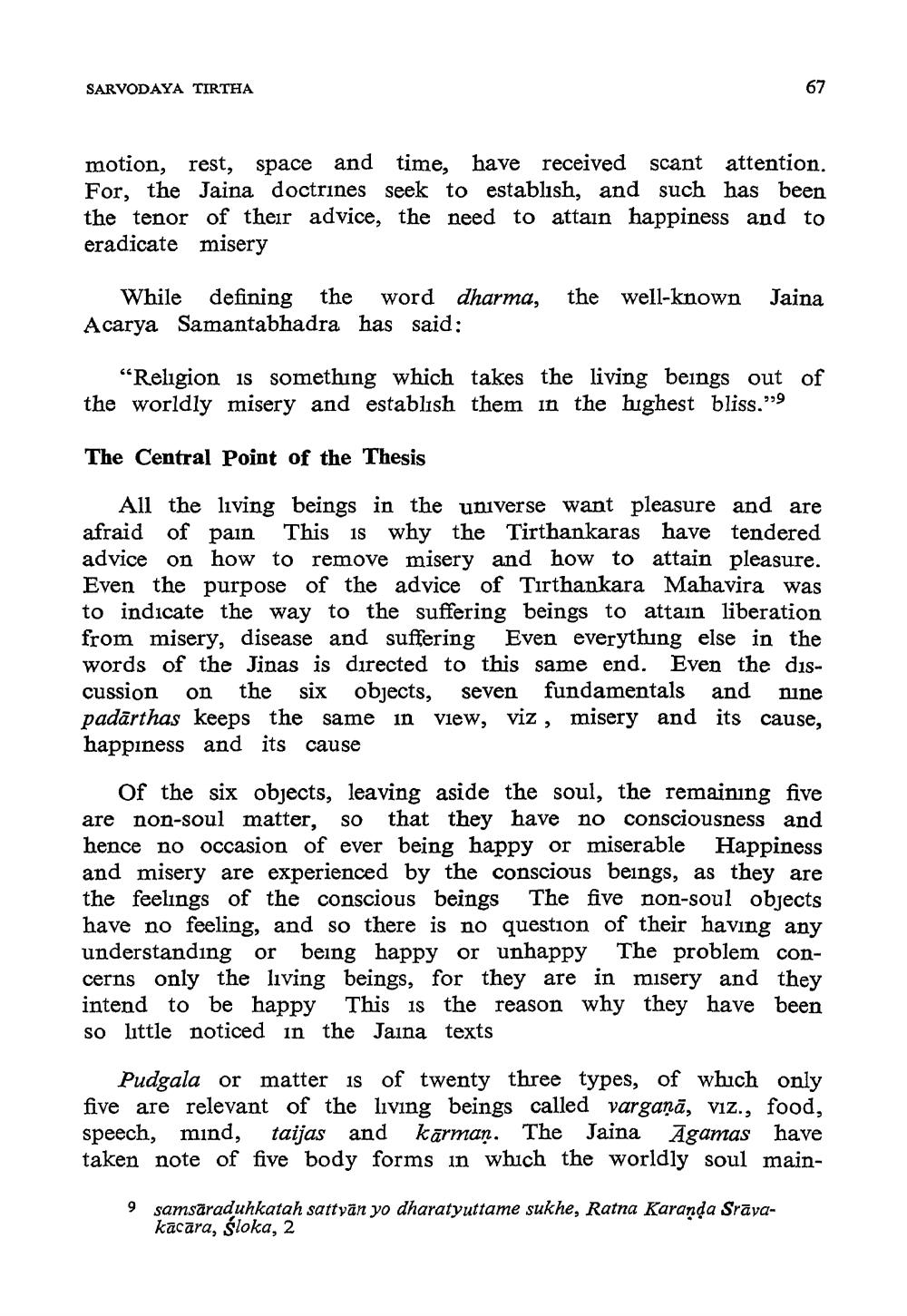________________
SARVODAYA TIRTHA
motion, rest, space and time, have received scant attention. For, the Jaina doctrines seek to establish, and such has been the tenor of their advice, the need to attain happiness and to eradicate misery
While defining the word dharma, the well-known Acarya Samantabhadra has said:
Jaina
“Religion is something which takes the living beings out of the worldly misery and establish them in the highest bliss."9
The Central Point of the Thesis
All the living beings in the universe want pleasure and are afraid of pain This is why the Tirthankaras have tendered advice on how to remove misery and how to attain pleasure. Even the purpose of the advice of Tirthankara Mahavira was to indicate the way to the suffering beings to attain liberation from misery, disease and suffering Even everything else in the words of the Jinas is directed to this same end. Even the discussion on the six objects, seven fundamentals and nine padārthas keeps the same in view, viz , misery and its cause, happiness and its cause
of the six objects, leaving aside the soul, the remaining five are non-soul matter, so that they have no consciousness and hence no occasion of ever being happy or miserable Happiness and misery are experienced by the conscious beings, as they are the feelings of the conscious beings The five non-soul objects have no feeling, and so there is no question of their having any understanding or being happy or unhappy The problem concerns only the living beings, for they are in misery and they intend to be happy This is the reason why they have been so little noticed in the Jaina texts
Pudgala or matter is of twenty three types, of which only five are relevant of the living beings called varganā, viz., food, speech, mind, taijas and karman. The Jaina Agamas have taken note of five body forms in which the worldly soul main
samsäraduhkatah sattyän yo dharatyuttame sukhe, Ratna Karanda Srāvakacara, sloka, 2




